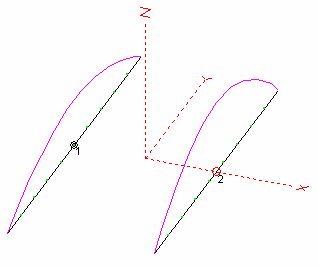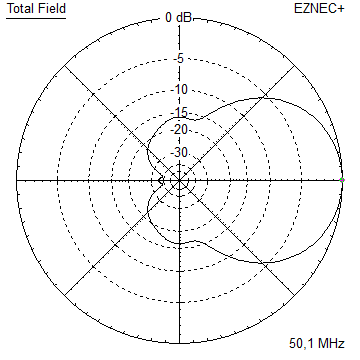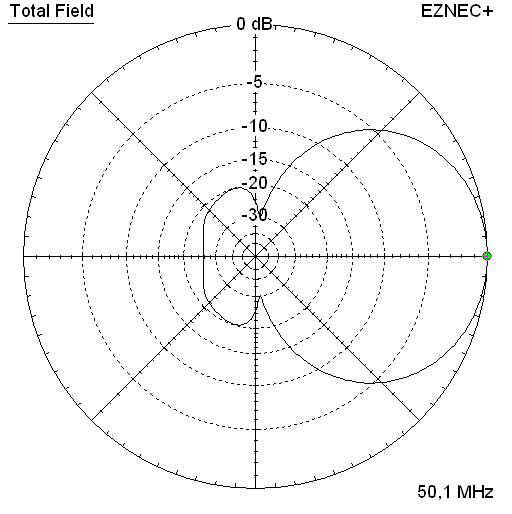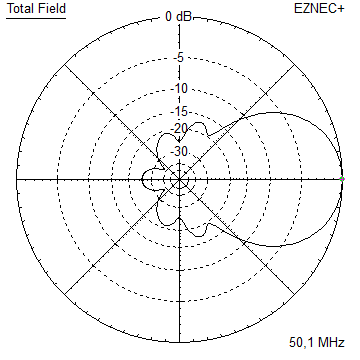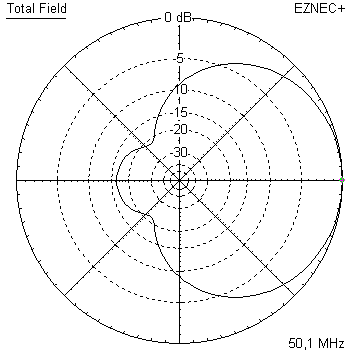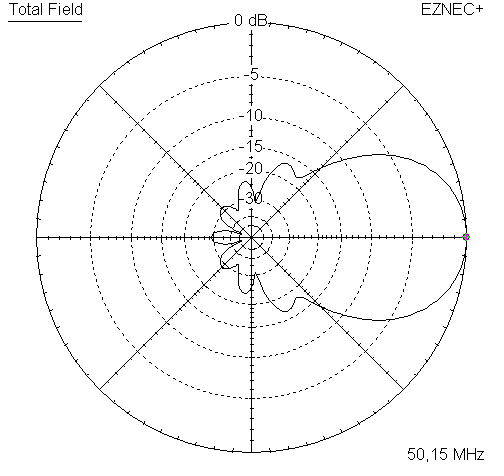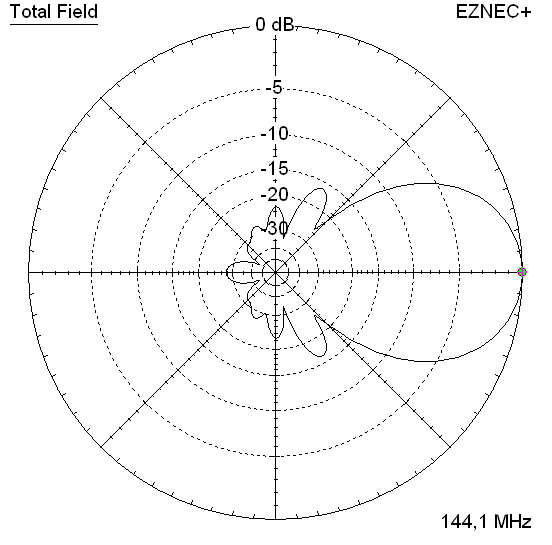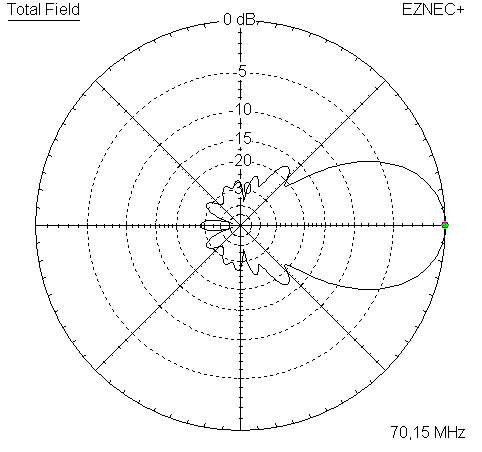
YBN 50-2w: Simple, easy to produce 2 Ele. Yagi
This little Yagi is as much bandwidth as can be. A forgiving and easy to build alternative to the HB9CV.
Take a view at the stacking section: 4 x 2 elem. vertical produce 13.5 dBi at a HPBW of 71 degr.
You will not miss any ES opening with this broad and flat main beam!
It does not have the HB9CV's famous F/B ratio but is much easier to build, no phasing lines, no capacitor ...
Nothing to protect from rain and snow. When you ar portable with a little antenna and little rig anyway
a high F/B does not help much. And note that the HB9CV's true gain is around 4.15 ... 4.2 dBD. No more then that.

Performance Data
Gain vs. isotr. Rad. 6.4 dBi Gain vs. Dipole 4.3 dBD -3 dB H-plane 134.8 deg. -3 dB E-plane 69.8 deg. F/B -9.3 dB F/R -6.3 dB Impedance 50 ohms Mechan. Length 1178 mm Electr. Length 0.20 λ Stacking Dist. h-pol. top-to-bottom 3.24 m or 10.6 ft side-by-side 5.22 m or 17.1 ft
Geometry
Pos. Length
in NEC
Refl. 0 2936
DE 1178 2736
Ele. Ø 12 mm
BC needs to be added according element holders & boom diameter chosen
Geometry

On-Boom-Holders: see here
The Driver Dipoles diameter is 12 mm for all examples.
Use EZNEC's Auto-Segmentation at 50.15 MHz.
Who has been looking at this Yagi?
Pattern and VSWR Plots
Elevation and Azimuth plot


RL and SWR plot

Tapered Builds
In some regions a sufficient length of 12 mm or 3/8" tube may be hard to purchase.
So I show how to build a tapered version here. Which same time offers an easy ability
to trim to frequency by adjusting the pushed in lenghts of the outer tubes.

geometry shown in the sketch below


Feeding the coax

and an N-flange-bushing on the to-ground side. For any very simple build you might do
without the ferrite core even as long as the QW-line is grounded in a low impedant way.
Which is to use a broad, flat bracket.
How to derive length (a)?
Wavelength is 5.978 m for 50.15 MHz. Length (a) is (5.978 m / 4) x v-factor.
Minus a few millimeters for the frequency depending v-factor of the insulation plastic.
Which usually is around plus 3 ... 4 percent at 50 MHz with means multiplication by 0.96.
For a PE coax that means (a) = 5.978 mm x 0.25 x 0.66 x 0.96 = 947 mm
For a foam coax that means (a) = 5.978 mm x 0.25 x 0.82 x 0.96 = 1176 mm
Dipole Box
Box is a 'Spelsberg Abox 040 Nautic, Industrial Quality acc. EN 606 70, IP65, free of halogene,
weatherproof, comes with cable gland size M20 spare holes' - 93 x 93 x 55 mm

Inside Closeup: Tube ends carry 2 slots, mid insulator is a glass fibre reinforced plastic rod Ø 11,7 mm by LA4ZH
(www.eidolon.no), 2 hose clamps fastening the mid rod plus connecting stripes made from 1 mm copper.

Boom face side: Making use of the 2 forseen fastening holes and two self cut brackets 35 x 30 mm to
mount to boom on a broad supporting area using a screw M5 x 30 (boom 20 x 30 mm)

Downloads
EZNEC file of this Yagi with Straight Split DE
